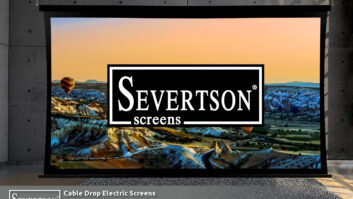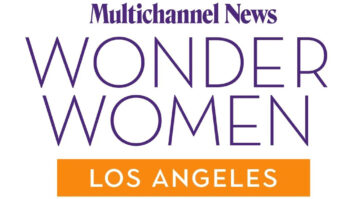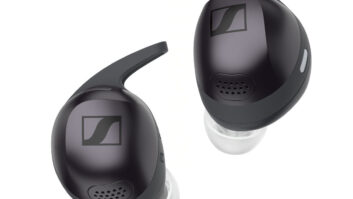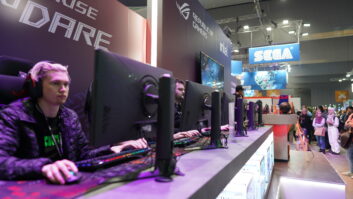If there’s one thing that hopefully came through loud and clear in 2008, it’s that two-way, digital-cable-ready TVs and devices are moving into the consumer and retail pipelines.
Up until now, this collaborative work between cable and consumer electronics companies has been a slow but steady progression. In 2008, we moved it from an active project to a working brand. Tru2way technology is rapidly becoming real.
Several significant milestones occurred in 2008, which was perhaps the busiest year ever for the ongoing work to blend two-way cable services into two-way consumer devices — and especially HDTVs.
For starters, last year’s International CES had a keynote session, conducted by Comcast CEO Brian Roberts, where the announcement was made that the body of technical work known as OpenCable and OCAP, for OpenCable Applications Platform, was re-branded to the Tru2way brand for consumer marketing purposes.
Panasonic and Samsung responded quickly and in time for the 2008 Christmas holiday buying season, with HDTVs bearing the Tru2way brand in Denver and Chicago and operational in Comcast’s service area in these two cities. Specifically, Panasonic went to market at Abt Electronics, Circuit City and Ultimate Electronics stores with its 42-inch Viera TH-42PZ80Q and its 50-inch Viera TH-50PZ80Q.
The 2008 CES was a landmark event for the cable industry. It permitted us to showcase our partnerships with leading consumer electronics manufacturers to develop TVs and other devices that will free consumers from the set-top box. The deployment ofTTru2way technology is the next evolution of TV in America.
Meanwhile, consumer research conducted during 2007 to 2008 shows enthusiasm toward the idea of an HDTV with a built-in digital cable set-top. “We think Tru2way technology is what people want,” said Paul Liao, Panasonic chief technology officer, citing research the company conducted earlier in the year.
The research findings: Consumers like the idea of combining a cable set-top into a TV for three primary reasons. One, it eliminates the need to pay money every month to lease a cable set-top box. Two, it vastly simplifies hookups. And three, it reduces the clutter of remote controls and boxes around the house.
“We did this research a number of times,” Liao said. “The people we surveyed didn’t just say yes [to the notion of integrated HDTV/cable devices] — “they resoundingly said yes.”
Sony also tipped toward Tru2way technology in 2008, signing on to build products by way of a binding memorandum of understanding in May. LG Electronics and Digeo are similarly committed to building Tru2way products as are ADB and Funai. On the semiconductor side, both Broadcom and Intel are Tru2way licensees.
On the service provider side, cable companiess continued to light up more geographic regions and internal back office systems for Tru2way devices, which will enter cable systems in one of two ways: in the form of retail devices, or via the digital set-top boxes they purchase and lease to consumers.
Time Warner Cable was especially active in the category, with a footprint which, according to the latest public figures, counted 1.5 million Tru2way set-tops deployed.
This shows a commitment from cable, as well as consumer electronics companies, to deploy Tru2way to a growing number of markets. It’s great for them, it’s great for us, and it’s great for consumers.
But Tru2way isn’t just about hardware. It continues to proactively evolve as a solid work environment for applications developers, too. In May, for instance, at the cable industry’s annual convention, CableLabs co-hosted its second annual developer’s conference. About 300 attended the weekend event held prior to the opening of the convention.
Earlier in the year, CableLabs and Sun Microsystems established a Tru2way presence on Java.net by launching The Open Cable Project located at Opencable.dev.java.net. Because Tru2way’s technical foundations are in Multimedia Home Platform and are similar to Blu-ray Java — both of which are based on Sun’s Java Platform — it made sense to build a work area for applications developers.
Of course, having such common standards allows application developers to draw from their existing knowledge base, while providing cross-platform application-development opportunities going forward.
From there, and as a national Tru2way footprint gels, the stage will be set to accommodate both “bound” (appearing “clickably” within a particular show) and “unbound” (appearing as a button on a remote control) interactive applications.
With so much palpable momentum gathering behind Tru2way — as a brand, and as a springboard for the interactive applications and services to follow — 2009 is set to continue as a heavy deployment year for Tru2way devices and services.
That means cable service providers will continue to activate their geographic clusters with Tru2way technologies in their signal-center head ends. For the other ends of the networks, an increasing assortment of Tru2way devices will flow into consumer homes, either as leased set-top boxes or as retail devices.













